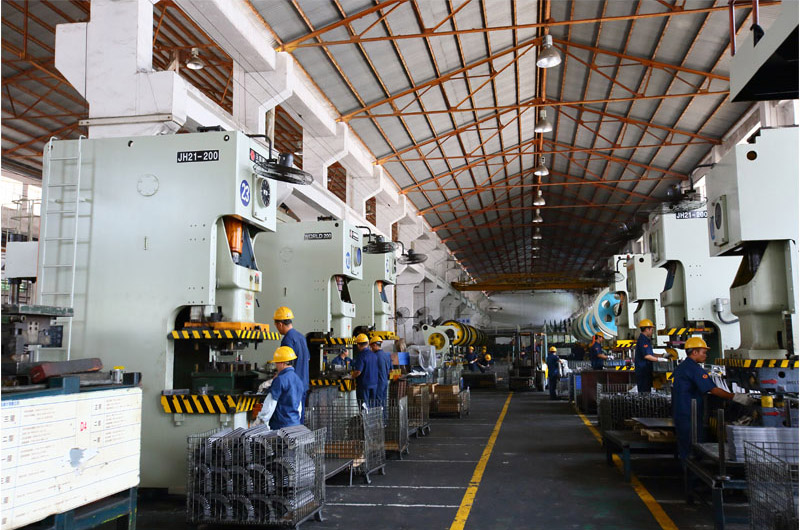Metal stamping is a manufacturing process where flat sheet metal is formed into a desired shape using a stamping press and dies. This process is widely used in various industries to create parts and components with high precision and consistency. Here are some key points about metal stamping:
Process Overview: Metal stamping typically involves placing a flat sheet of metal between a punch (which applies force) and a die (which shapes the metal). The punch and die work together to deform the metal into the desired shape.
Types of Operations: Stamping operations can include blanking (cutting the sheet metal into a flat shape), piercing (creating holes or cutouts), bending (forming edges or angles), and drawing (stretching the metal into a shape like a cup or shell).
Materials: A wide range of metals can be used in metal stamping, including steel, aluminum, copper, and alloys. The choice of material depends on factors such as the required strength, durability, and cost.
Advantages: Metal stamping offers several advantages, such as high production rates, repeatability of parts, and the ability to create complex shapes with tight tolerances. It is also cost-effective for large production runs.
Applications: Metal stamping is used in various industries, including automotive (for car body panels and components), aerospace (for aircraft parts), electronics (for enclosures and connectors), and appliances (for housings and internal components).
Tooling: The dies used in metal stamping are typically custom-made and can be complex and expensive. However, once the dies are made, they can produce large quantities of parts efficiently.
Overall, metal stamping is a versatile and efficient manufacturing process that plays a crucial role in producing a wide range of metal components used in everyday products and industrial applications.



Stamping is mainly aimed at sheet metal. Through molds, it can be used to make materials, punching, forming, deep drawing, trimming, precision punching, shaping, riveting, and extrusion parts, and is widely used in various fields.
characteristic:
1. High rigidity
2. Stable and high-precision
3. Reliable and safe operational performance
4. Production automation, labor-saving, and high efficiency
5. Sliding block adjustment mechanism
6. Innovative design, environmentally friendly
Our factory started metal parts manufacturing since 1999 and now have over 25 years of production experience. We are proficient in the producing many different kinds of metal parts and can find the best way to reduce cost for customers.

